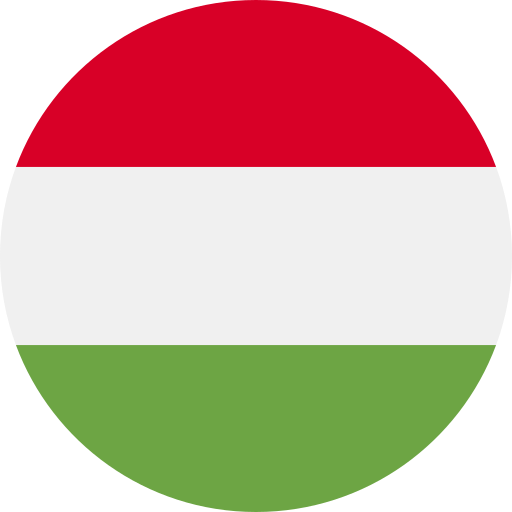Key Takeaways
- Language Family Context: Hungarian is part of the Uralic language family, which includes Finnish and Estonian, showcasing unique linguistic properties like vowel harmony and agglutination.
- Historical Evolution: The Hungarian language diverged from its Uralic ancestors around 2,000 years ago, influenced by various migrations and interactions with neighboring cultures.
- Linguistic Features: Hungarian has approximately 18 grammatical cases and a distinct phonetic inventory that sets it apart from Finnish and Estonian, which share some morphological traits but differ significantly in vocabulary.
- Cultural Influences: Historical exchanges have enriched Hungarian with loanwords from Slavic and Germanic languages, while Finnish retains a more conservative vocabulary reflective of its ancient roots.
- Modern Relevance: Language preservation initiatives are crucial for maintaining the uniqueness of Hungarian and Uralic languages, promoting bilingualism to enhance cultural identity in contemporary society.
Ever wondered how Hungarian fits into the broader family of Uralic languages? You’re not alone. Many people find themselves puzzled by the unique characteristics that set Hungarian apart from its Uralic relatives like Finnish and Estonian.
Overview of Hungarian and Uralic Languages
Hungarian belongs to the Uralic language family, which includes languages like Finnish and Estonian. This family is unique, with its roots tracing back to a common ancestor spoken thousands of years ago. Hungarian stands out due to its distinct features, such as vowel harmony and agglutinative structure.
Uralic languages share similarities in grammar and vocabulary but exhibit significant differences across regions. For example, while Finnish uses a rich system of cases for nouns, Hungarian employs around 18 grammatical cases that affect noun forms based on their role in sentences.
The phonetics also vary among these languages. Hungarian has specific sounds not found in Finnish or Estonian. This variation contributes to the overall uniqueness of each language within the family.
In terms of usage, Hungarian is predominantly spoken in Hungary and by communities in neighboring countries. Meanwhile, Finnish can be heard primarily in Finland, with Estonian mostly spoken in Estonia. Their geographic distribution influences cultural exchanges and linguistic evolution over time.
Overall, understanding these languages provides insight into their interconnectedness while highlighting what makes each one special within the broader Uralic context.
Historical Background
Hungarian and Uralic languages have a rich historical context that shapes their evolution. Understanding this background reveals the intricate connections and distinctions between these languages.
Origins of Hungarian Language
Hungarian, known as Magyar, traces its roots to the Uralic language family. It diverged from its ancestors around 2,000 years ago, influenced by various migrations and interactions with neighboring cultures. This linguistic journey began in the Ural Mountains region, where early speakers migrated westward over centuries. By the time they settled in present-day Hungary around the 9th century AD, significant exchanges with Slavic and Germanic languages had occurred. These influences contributed to unique phonetic characteristics that set Hungarian apart from its Uralic relatives like Finnish and Estonian.
Development of Uralic Language Family
The Uralic language family encompasses several branches, primarily divided into Finno-Ugric and Samoyedic languages. The Finno-Ugric branch includes Hungarian, Finnish, Estonian, and several others spoken across northern Eurasia. Each language has developed distinct features while retaining some core grammatical structures common to their origins. For example, agglutination—where words are formed by stringing together morphemes—remains a hallmark of both Hungarian and Finnish.
Over time, external influences shaped these languages further. While Finnish absorbed vocabulary from Swedish due to historical ties with Scandinavia, Hungarian encountered Turkic elements through contact with nomadic tribes in Central Asia. Despite these regional adaptations over centuries, fundamental features like vowel harmony persist across many Uralic languages.
As you explore this fascinating linguistic landscape, remember that each language carries stories of migration and cultural exchange that contribute to its identity today.
Linguistic Features
Hungarian and Uralic languages showcase unique linguistic characteristics, setting them apart within the broader language family.
Phonetics and Phonology
Hungarian features a rich array of vowel sounds due to its system of vowel harmony. This means that vowels within words harmonize, creating a fluid sound pattern. For example, front vowels appear in words with front consonants while back vowels accompany back consonants. In contrast, Finnish and Estonian also exhibit vowel harmony but differ in their specific phonetic inventories. Hungarian includes distinct phonemes like the long “ő” and “ű,” which don’t exist in Finnish or Estonian, contributing to its unique auditory quality.
Morphology and Syntax
Hungarian employs an agglutinative structure, utilizing prefixes and suffixes extensively to convey grammatical relationships. This approach results in complex word forms that can express what would require multiple words in other languages. With approximately 18 grammatical cases, nouns change form based on their syntactic roles—something less pronounced in Finnish or Estonian. While all three languages share some morphological traits from their common ancestor, Hungarian’s extensive use of cases marks a significant divergence.
Vocabulary Differences
Vocabulary illustrates further distinctions between these languages. Hungarian incorporates numerous loanwords from Slavic and Germanic sources due to historical interactions and migrations. In contrast, Finnish retains a more conservative vocabulary influenced primarily by its ancient roots with fewer external borrowings. While certain core vocabulary items may overlap due to shared ancestry, many everyday terms reflect different paths shaped by cultural context over centuries.
Understanding these linguistic features enhances your appreciation for the complexities within Hungarian versus other Uralic languages like Finnish and Estonian.
Cultural Context
Cultural context plays a vital role in understanding the nuances of Hungarian and Uralic languages. The interactions with various neighboring cultures significantly shaped their development.
Influence of Other Languages
Hungarian, known as Magyar, showcases a remarkable blend of influences from several languages, primarily due to historical migrations and cultural exchanges. You’ll find that its vocabulary includes numerous loanwords from Slavic, Germanic, and even Turkic origins. For instance, everyday terms like “kávé” (coffee) illustrate how outside influences have enriched the language. This adaptability highlights not only Hungary’s complex history but also its openness to linguistic evolution. In contrast, Finnish maintains a more conservative lexicon with fewer external borrowings, reflecting its distinct cultural identity.
Literature and Folk Traditions
Literature and folk traditions offer deep insights into both Hungarian and Uralic cultures. Hungarian literature boasts a rich tapestry woven from poetry, prose, and folklore that often reflects national identity themes. Works by notable authors provide windows into societal values and historical experiences unique to Hungary. Moreover, folk traditions preserve ancient narratives passed down through generations; tales about mythical creatures or historical events resonate strongly within these communities.
Finnish literature similarly draws upon folklore with stories featuring characters like Väinämöinen or Lemminkäinen from the Kalevala epic. These narratives reveal shared beliefs while simultaneously showcasing each culture’s individuality within the broader Uralic family.
Understanding these cultural contexts enhances your appreciation for the complexities of Hungarian versus other Uralic languages—showing how history molds language just as much as grammar does.
Modern Implications
Understanding modern implications of Hungarian and Uralic languages reveals their relevance in today’s multicultural landscape. These languages not only reflect historical connections but also impact cultural identity and communication in contemporary settings.
Language Preservation Efforts
Language preservation efforts focus on maintaining the unique characteristics of Hungarian and other Uralic languages. Organizations promote educational programs, workshops, and community initiatives aimed at teaching younger generations about their linguistic heritage. Such efforts include creating resources like textbooks, online courses, and multimedia content that highlight these languages’ distinct features. Engaging with local communities fosters a sense of pride in language use while encouraging fluency among speakers.
Education and Bilingualism
Education systems play a crucial role in promoting bilingualism among speakers of Hungarian and related Uralic languages. Schools often implement dual-language programs that expose students to both their native tongues and dominant regional languages, enhancing cognitive flexibility. Research shows that bilingual individuals tend to demonstrate improved problem-solving skills and creativity due to the mental agility required for switching between languages. Encouraging this type of education prepares future generations to navigate globalized environments while preserving their linguistic roots.
By focusing on these aspects, you can appreciate how the evolution of language affects not just communication but also cultural identity in a rapidly changing world.
Conclusion
Understanding the nuances between Hungarian and other Uralic languages offers valuable insights into their rich histories and unique characteristics. You can appreciate how geographic, cultural, and historical factors have shaped these languages over time.
By recognizing the distinct features of Hungarian such as its agglutinative structure and vowel harmony you gain a deeper appreciation for its complexity. As you explore further into the world of Uralic languages you’ll find that each one tells a story of migration and adaptation that reflects the vibrant cultures they represent.
Engaging with these languages not only enhances your linguistic knowledge but also connects you to a broader narrative woven through centuries of human experience.
Frequently Asked Questions
What is the Hungarian language classified as?
Hungarian is part of the Uralic language family, which also includes Finnish and Estonian. It has distinct features that set it apart from its relatives.
How does Hungarian differ from Finnish and Estonian?
Hungarian stands out due to its vowel harmony, agglutinative structure, and extensive use of grammatical cases. These features create unique word forms not found in Finnish or Estonian.
What historical influences shaped the Hungarian language?
Hungarian evolved around 2,000 years ago during migrations that led to interactions with Slavic and Germanic languages, incorporating many loanwords while retaining core Uralic characteristics.
How many grammatical cases does Hungarian have?
Hungarian employs around 18 grammatical cases that modify noun forms based on their roles within sentences, a key feature that enhances its expressive capacity.
Why are cultural contexts important for understanding Hungarian?
Cultural context reveals how historical migrations and exchanges influenced vocabulary and linguistic evolution. This background enriches our understanding of societal values in Hungary compared to Finland.
Are there efforts to preserve the Hungarian language today?
Yes, various educational programs and community initiatives aim to maintain the unique characteristics of the Hungarian language while promoting bilingualism among younger generations.
How do modern implications affect Uralic languages like Hungarian?
Modern multicultural dynamics highlight the importance of these languages in shaping cultural identity. Language preservation efforts ensure their relevance in global communication while respecting tradition.







